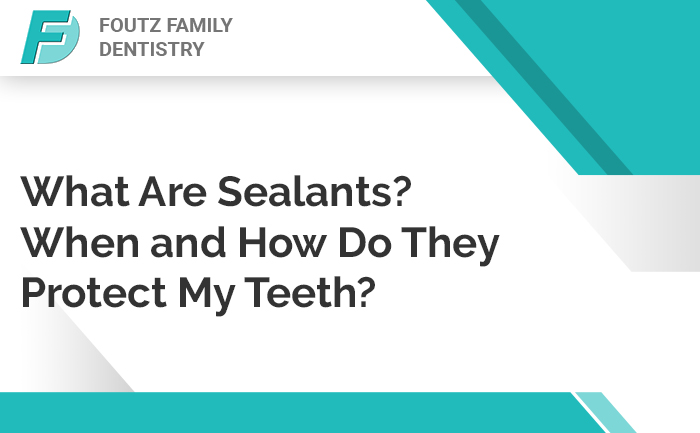
Dental sealants are just one tool that dentists use to protect teeth against decay and damage. While they are not for everyone, dental sealants can play an important part in maintaining the health of your teeth and getting the most out of daily dental hygiene activities like brushing and flossing.
Sealants are a thin, protective coating that is typically applied to the back molars. It’s an easy process, with the sealant painted directly onto the tooth enamel and then allowed to dry. Sometimes the drying process uses a curing light. Once they’re in place, sealants blend in with the surrounding tooth and will likely not be visible to anyone else.
The general idea of a dental sealant is that it seals off all the grooves and impressions in the targeted teeth that are generally very difficult to reach by traditional flossing and brushing. Sealants eliminate the possibility of food and other particles becoming trapped in those difficult-to-reach places and going on to form cavities or cause decay.
While they are not a permanent fixture, sealants can last a considerable amount of time. They will remain in place for up to ten years if properly maintained. Their effectiveness does wane with time, and they offer the most protection in the first two to four years after placement.
Who Can Get Sealants?
Traditionally, sealants are placed on healthy teeth that have no cavities or decay. This means they’re most often used on children, although adults who have healthy teeth with no presence of tooth decay or cavities would also be eligible for sealants.
Sealants can be particularly helpful for kids. Nearly 30% of children between the ages of 2 and 5 will develop a cavity. Sealants can help prevent that from occurring.
Even though sealants have most often been used for children and many adults would have been rendered ineligible due to existing decay, dental technology has made incredible advancements in recent years. Using the Waterlase™ technique, more adults may now be eligible for sealants. The precision offered with Waterlase™ allows your dentist to remove debris and properly sanitize the tooth, making sealants possible!
If you are ineligible for dental sealants, remember that they are only one option of many when it comes to protecting your teeth.
Discuss With Your Dentist
The best way to determine whether sealants are right for you is to speak with your dentist. Sealants can be an incredibly useful aid in dental hygiene when used alongside proper brushing and flossing practices. Even if you are not personally a candidate for sealants, speak with your child’s dentist about the possibility of using sealants on their teeth.
When it comes to your teeth, the importance of preventative care can’t be overstated. Any added protection against cavities and tooth decay will work to the benefit of your teeth and overall dental health.









